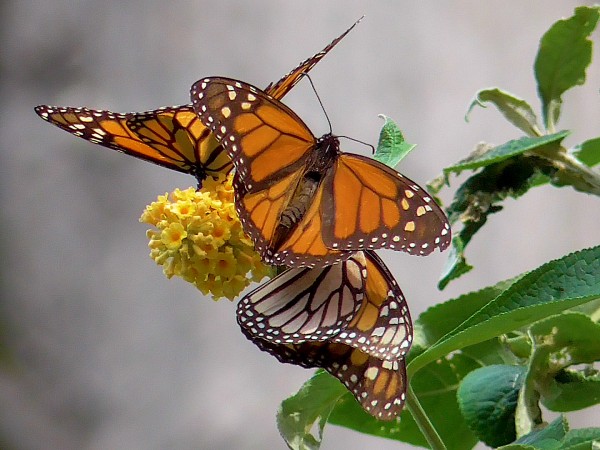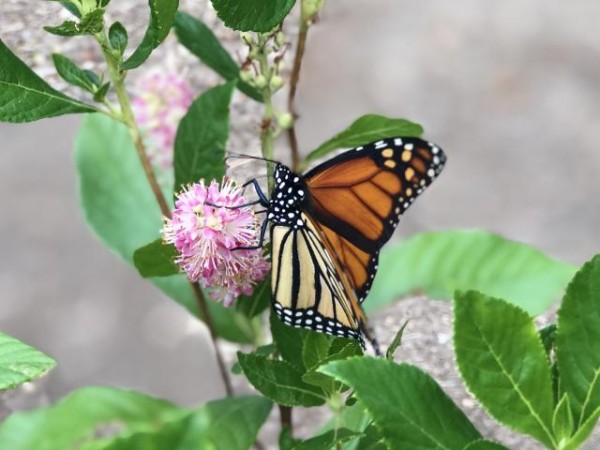Peak of the Overwintering Season
Estela Romero and Ana Moreno share news from monarch sanctuaries in Mexico. In the Western U.S., Gail Morris provides updates about monarch counts in California. And if you live in the Southeastern U.S., report winter monarch sightings to Journey North.
Letter from Estela Romero: Splendor
At El Rosario and Sierra Chincua Sanctuaries, Estela Romero shares dense clusters of monarchs and colonies on the move. Estela writes, " Dense clusters can now be seen at a moderate distance from a low elevation point of the steep canyon and springs known as the El Tepozán site . . . Driving to El Rosario Sanctuary, visitors are confronted by indescribable beauty as a continuous wave of monarchs stream down from the mountains . . . In spite of the rather warm winter up to now, monarchs seem to keep stable and quiet at their hibernating locations in both Sanctuaries.
Read more of Estela Romero's Letter: Spendor»
Leer más de la carta de Estela Romero: Espléndidamente»
Letter from Ana Moreno: Activity in January
At Cerro Pelon Sanctuary, Ana Moreno details how weather conditions affect the activity and movement of monarchs. Ana writes, "Late in the afternoons the temperature drops and during the nights it is cold as well as in the mornings which is normal. But since the colonies consolidated into one, they have noticed a slight change from where they were at first. They have moved approximately 30 meters lower. What has been noticed that there have been more cold days with temperatures that did not even reach 10°C, so not much activity on those days. But on the warmer sunny days, you see more flight activity of the butterflies. Pato has even seen some mating, but it only happens when the temperatures are between 13 and 15 °C."
Read more of Ana Moreno's Letter: Activity in January»
Leer más de la carta de Ana Moreno: Actividad en Enero»
Letter from Gail Morris: Western Monarch Winter 2021–22 Report #3
Out West, Gail Morris notes a change in the number of monarch sightings and provides more details about monarch counts in California. Gail writes, "Western monarch reported sightings were few this week. Warming temperatures brought a change in monarch activity at the overwintering sites to share as 2022 continues to unfold . . . Diana Magor reports the following monarch counts at Lighthouse Field in Santa Cruz, California . . . We reached out to Pacific Grove Museum’s Stephanie Turcotte’s about the monarch count at Pacific Grove (PG) this week and she shared this fascinating discovery visiting the area on Thursday."
Read more of Gail Morris' Letter: Western Monarch Winter 2021–22 Report #3»
Monitor Overwintering Monarchs in Southeastern U.S.
If you live in Texas, Louisiana, Mississippi, Alabama, and Florida as well as Georgia, South Carolina and North Carolina, we want to hear from you. Not all monarchs migrate to Mexico. Some breed throughout the winter in the Southeastern U.S., and scattered reports show that other monarchs might overwinter in this region in a non-reproductive state. Researchers and others studying monarchs seek your help to understand this phenomenon.
Denise in Panama City Beach, FL: "This was an adult monarch. Not a Gulf Frittilary, I know the difference. I was surprised to see it since it's a cold day in the 50s." (01/18/2022)
What to Report
There are four types of observations you can submit to Journey North:
- Monarch Adult Sighted
- Monarch Egg(s) Sighted
- Monarch Larvae Sighted
- Milkweed Sighted
Learn more about What to Report.







